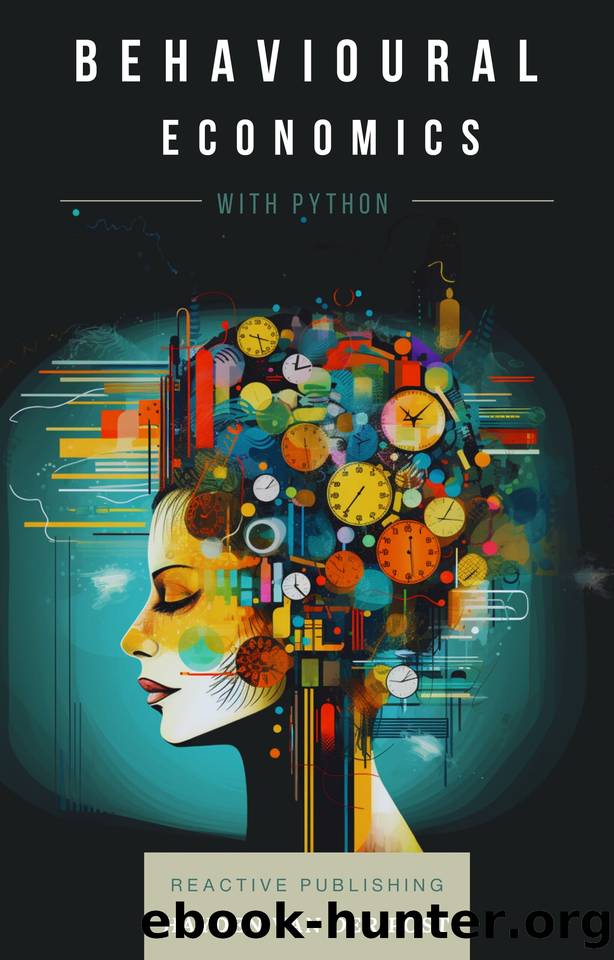Behavioural Economics with Python: A Comprehensive Guide by Schwartz Alice & Van Der Post Hayden

Author:Schwartz, Alice & Van Der Post, Hayden
Language: eng
Format: epub
Publisher: Reactive Publishing
Published: 2023-12-15T00:00:00+00:00
Sample Size and Power Analysis
When embarking on the empirical quest of A/B testing, the compass guiding our experimental design is the determination of an appropriate sample sizeâensuring that the study is adequately powered to detect a meaningful effect. The interplay of sample size and statistical power forms the backbone of a credible A/B test, and neglecting this step is akin to setting sail without a map.
In the realm of economics, where decisions hinge on the precision of outcomes, power analysis becomes a crucial prelude to the testing phase. It answers a fundamental question: How large should our sample be to confidently observe the true effect of our intervention, if it exists? Python, with its computational prowess, is our ally in this analysis, offering us the tools necessary to prevent the twin errors of false positives and false negatives.
Statistical power, the probability that a test will correctly reject a false null hypothesis, is a function of several factors: the significance level (alpha), the effect size (the minimum change we deem important), and the sample size. Power analysis, therefore, is a balancing act, a delicate calculation that Pythonâs statsmodels library can perform with ease.
The process begins by determining the desired power level, typically set at 0.8 or 80%, indicating that there's an 80% chance of detecting an effect if one truly exists. Then, we must consider the significance levelâcommonly 0.05, which means we're willing to accept a 5% chance of a false positive. With these parameters, we turn to Python to calculate the minimum sample size needed for our test.
Utilizing Python's power analysis functions, we input our effect sizeâderived from either preliminary data or benchmark studies. This is a critical step, as overestimating the effect size leads to an underpowered study, while underestimating requires a larger, perhaps unfeasible, sample size.
The output of this computational exercise is a sample size that aligns with our experimental aims. Armed with this knowledge, we can proceed with confidence, knowing that our study is constructed on a foundation of statistical rigor. Moreover, Python's capabilities allow us to adjust and re-calculate as variables in our hypothesis evolve, ensuring that our analysis remains robust throughout the research process.
The importance of sample size and power analysis extends beyond the initial setup of the A/B test. It informs us about the quality and reliability of our findings, and it is a testament to the integrity of our research. As we continue to harness Pythonâs analytical might, we ensure that the outcomes of our experiments are not just a matter of chance but a reflection of careful planning and scientific precision.
In the grand narrative of behavioral economics, each data point is a character, each analysis a plot twist. The meticulous approach to power analysis is not merely a technical requirement but a narrative necessity, ensuring that the story we tell is one of credibility and clarity.
Analyzing Experiment Data
As the curtains rise on the act of data analysis, the experimental economist takes center stage, equipped with Python as their lens through which to observe the intricate patterns of human behavior.
Download
This site does not store any files on its server. We only index and link to content provided by other sites. Please contact the content providers to delete copyright contents if any and email us, we'll remove relevant links or contents immediately.
Deep Learning with Python by François Chollet(14808)
The Mikado Method by Ola Ellnestam Daniel Brolund(12063)
Hello! Python by Anthony Briggs(11973)
OCA Java SE 8 Programmer I Certification Guide by Mala Gupta(11379)
Dependency Injection in .NET by Mark Seemann(11162)
A Developer's Guide to Building Resilient Cloud Applications with Azure by Hamida Rebai Trabelsi(10528)
Algorithms of the Intelligent Web by Haralambos Marmanis;Dmitry Babenko(9983)
The Well-Grounded Java Developer by Benjamin J. Evans Martijn Verburg(9595)
Grails in Action by Glen Smith Peter Ledbrook(9304)
Hit Refresh by Satya Nadella(9039)
Sass and Compass in Action by Wynn Netherland Nathan Weizenbaum Chris Eppstein Brandon Mathis(8908)
Secrets of the JavaScript Ninja by John Resig Bear Bibeault(8785)
The Kubernetes Operator Framework Book by Michael Dame(8473)
Test-Driven iOS Development with Swift 4 by Dominik Hauser(8366)
Exploring Deepfakes by Bryan Lyon and Matt Tora(8295)
Robo-Advisor with Python by Aki Ranin(8248)
Practical Computer Architecture with Python and ARM by Alan Clements(8223)
Implementing Enterprise Observability for Success by Manisha Agrawal and Karun Krishnannair(8193)
Building Low Latency Applications with C++ by Sourav Ghosh(8096)
